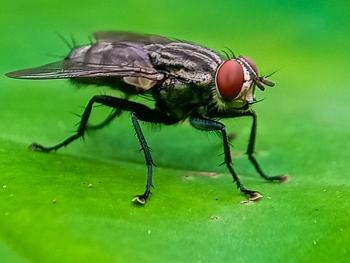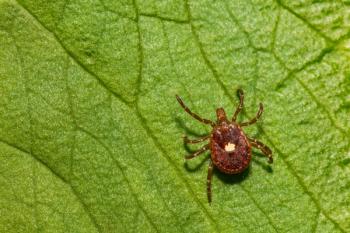
More strange-but-true facts about parasites
A second helping of parasitic factoids to ponder when you've got the itch.
In the veterinary world, dealing with parasites is something that we do on a day-to-day basis. These tiny organisms can cause a variety of issues and can sometimes be hard to identify. Maybe you are trying to diagnose flea allergy dermatitis on such fastidious groomers as cats or convince an owner that her pet has a flea allergy dermatitis when she insists she has never seen a flea on her pet a day in its life. Despite all the frustrating conversations that we encounter every day, here are some interesting facts that may brighten your day. (Editor's note:
Parasites: The top of the food chain?
Cats, dogs, people ... it's what's for dinner? (Getty Images)It is thought that parasites make up more than 80 percent of the life forms on the planet. More and more organisms seem to be identified every day. Parasites have not previously been included on the food chain, but in reality every ecosystem is loaded with these tiny unseen predators. Their main purpose in life is to feed on the host, reproduce, infect and then die. It's as simple as that. Although most parasites aren't known to kill directly, they all can cause severe issues if overproduced, especially in the sick, elderly and young. But the few that are deadly can strike quickly and without much warning (e.g. severe cases of toxoplasmosis can result in neurologic issues, especially in babies and immunocompromised people). So, again, who really is at the top of the food chain?
Keep your coccidia to yourself
A photomicrograph of the human coccidia Sarcocystis hominis, formerly known as Isospora hominis. (Photo courtesy of the CDC)Although pets are able to share numerous intestinal parasites with people, as well as each other, coccidia is not one of them. Cats can't become infected from the coccidia shed by dogs, and vice versa. It is only spread by ingestion through contaminated soil or through ingestion of a transport host. The growth of coccidia can only occur in temperatures between 68 and 104 F (20 and 40 C). If not exposed to freezing or extremely high temperatures, sporulated oocysts can live up to one year under the right conditions. Let's think about something else ...
Cheyletiella mites: Fear the walking flakes
Is this dog's nibbling due to these irritating mites? (Getty Images)Also known as walking dandruff, Cheyletiella species is one of the only mites that can actually be seen by the naked eye. It looks like little pieces of dandruff moving around the skin. They are highly contagious among dogs, cats, rabbits and even people; they may be in other mammals as well, although this is something that is still being studied. This mite has become more prevalent over the last few years, being diagnosed frequently in more and more practices all over the country. And with the continuous flow of patients coming in with dermatologic issues, chances are this mite is getting misdiagnosed. So next time you have an itchy patient exhibiting clinical signs of a possible mite infestation, keep cheyletiellosis mind.
The truth about toxoplasmosis
A transmission electron micrograph of a Toxoplasma gondii tissue cyst. (Photo courtesy of the CDC)Toxoplasmosis can actually be found in most animals but the Toxoplasma organism can only complete its lifecycle once introduced into the intestines of our feline patients. This particular parasite can be transmitted to people. For the most part, an infected human will show no symptoms. If healthy, the body is capable of taking care of the infection on its own. But it is highly dangerous to people with weakened immune systems and the very young. If a mother gets infected while she is pregnant, it can cause premature birth or even birth defects that show up months to years after birth. Some defects include seizures, feeding difficulties, loss of hearing and even mental disabilities. It has even been reported to cause miscarriages. It's our job in the veterinary world to try to treat and prevent the spread as quickly as possible.
Fleas: Nature's itty-bitty assassins
The cat flea Ctenocephalides felis prefers yummy cat and dog hosts.It is not widely known by the general population that fleas can kill. Whether it be directly from them because of anemia, or acting as a catalyst resulting in death, they can be dangerous.
Chris Feaster, VMD, and Haley Switzer, veterinary assistant, are team members at Valley Veterinary Clinic in Buckingham, Pennsylvania.
Newsletter
From exam room tips to practice management insights, get trusted veterinary news delivered straight to your inbox—subscribe to dvm360.



